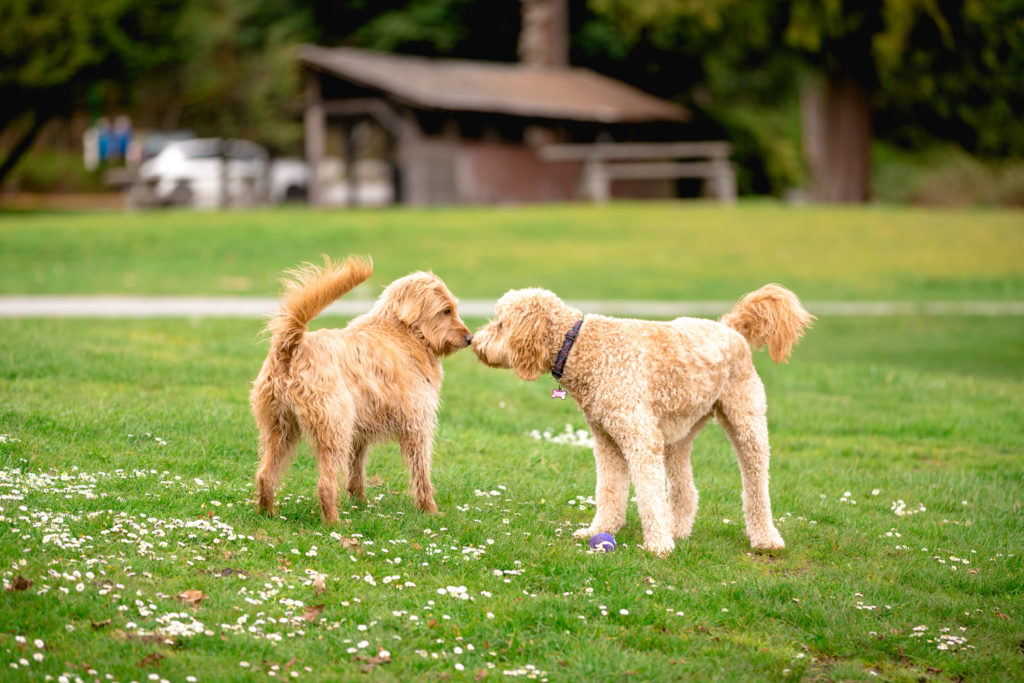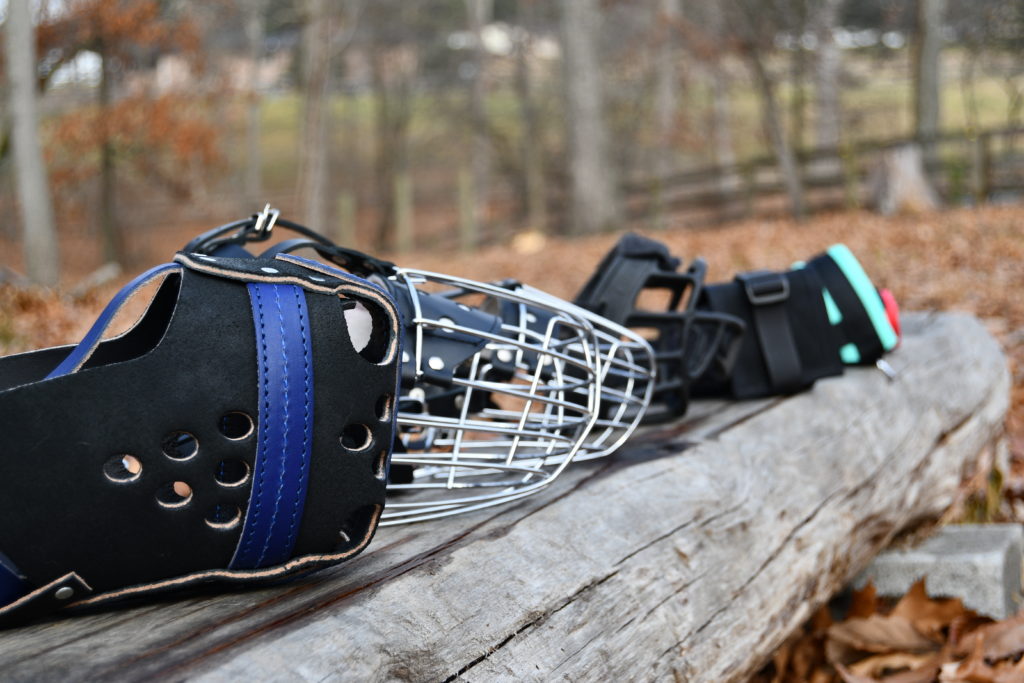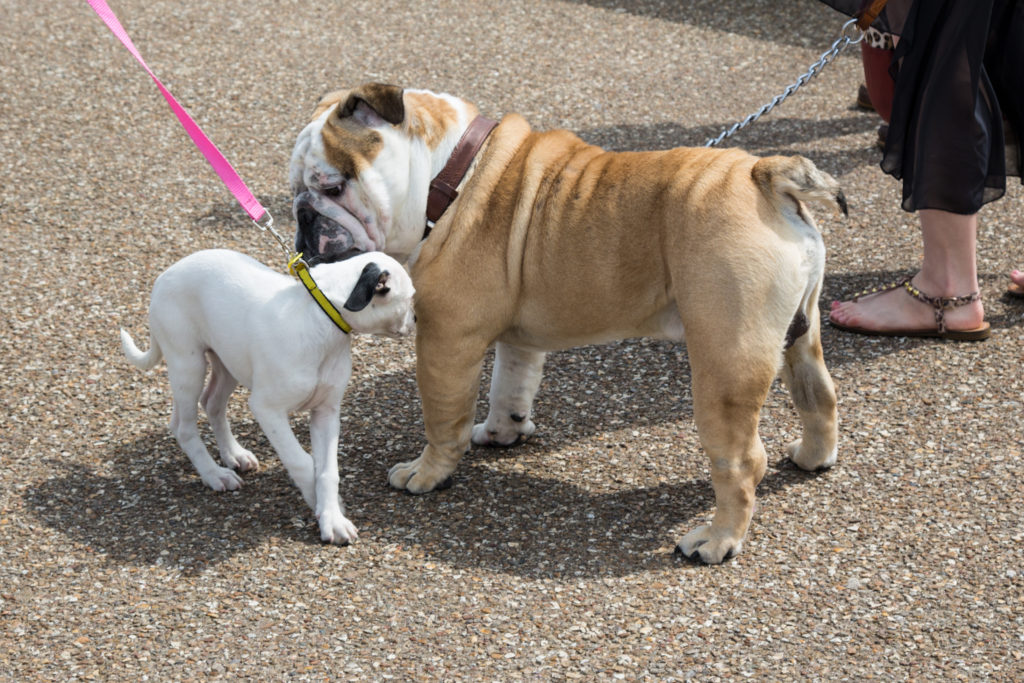On Leash Dog Greetings & 6 Tips To Avoid Problems
Greetings between dogs is often problematic. Dog body language is so subtle and quick that to the untrained eye, it’s difficult.
And even more difficult when you’re standing behind your dog and not in frontof your dog.
And it’s something people understandably struggle with. So I when I was helpfully linked this video, I wanted to
Caveat for this video
We cannot tell what the Black dog’s issue is, because this is one, small snapshot into this dog’s life what we can tell, however, is that this dog has been put in a situation where he has not been set up for success.
This could be poor socialisation, but in all likelihood, it’s probably reactivity, whether early, or late in the process.
I did not take this video, I did not put these dogs in this position, it’s just a very good example that I wanted to use and thoroughly explain the behaviour exhibited here.
The Black Dog
The very first thing that can be noticed is the incredibly direct approach from the black-husky type dog. Direct approaches are always a big warning sign. Naturally, dogs like curves, and if they aren’t curving (like the brown dog) they show other signs of deflection or placation.
Within the greeting, the black dog keeps his muzzle focused, really hard on the other dog, almost waiting for the dog to show a single sign of aggression.
The black dog is also leaning hard into his own stature and is unflinching. Do you see the hackles up too? A hard unblinking stare followed by some tension in the lips. as we draw out, the tail carriage is stiff – even for a husky (it’s very important that we consider breed when looking at body language too)
Then the lip tightening happens more, see the minute movements in the whiskers and that tiny bit of tension in the cheek? This would be the precursor to a snarl.
Then there’s a small, subtle lick of the lips as the brown dogs movements start to get a little more animated and not quite as demure, this denotes fear. It’s subtle, but it’s a sign that the husky-type’s dog’s emotion is rooted in anxiety – If I were training the black dog, at this time, I would expect to be dealing with fear-based reactivity, likely in it’s early stages.
And then you have the leash tighten, added force on the neck (I believe tha’ts a slip leash), and that creates the moment of discomfort and gives the black dog enough reason to go in to attack.
Throughout this, the black dogs body language was forward, bullish and what you might find surprising

The Brown Dog
The first thing that you see this dog do? Is sniff the ground before the meeting even happens, this is an effort to deflect the attention of the black dog, it’s a calming, non-threatening signal that is meant is kind of like a way to decrease attention? But the Husky-type dog doesn’t deflect and keeps approaching in a hyper-focused manner.
Then you can see flat ears, low posture (low is always less threatening than high), and an upward lick towards the black dog and very soft eyes and a swishy, gentle tail that’s not erratic.
The brown dog turns away, he leaves a lot of ‘weak points’ exposed which is a way of saying that he’s not threatening the other dog.
Even notice the angle he’s standing at? The brown dog is at an angle offset from the black dog. This, in a way, is the brown dog trying to offer the other dog a sniff, which would normally be a sign of a more friendly greeting.
The brown dog keeps giving lip licks which show his nervousness about the other, larger dog. Normally the other dog would listen to this and give more space, but the black dog does not.

What This Should Have Looked Like
When the brown dog deflected, the black dog should have diverted his attention to whatever the brown dog was sniffing, and shared a mutual interest. Then it should have been a cast of curves to sniff one another, both dogs having soft, swishy tails. Relaxed motion and gentle sniffs that aren’t over intrusive and then both owners could have cued to move on, and the dogs move on.
Good Signs
Bad Signs
A friendly dog is a floppy dog, wiggly motions, soft, rocking horse type behaviour. Essentially? The motions should be ineffective. The dog must show that it’s definitely not there to hurt the other. There should be mutual behaviour, so one dog should mimic the other, then is should change pace, and switch back to the other dog.
You know when you were a kid and there was always one kid who wouldn’t share, or they always had to be the hero or they had to be Ariel, or whatever it was for you? That dog is also a dog who lacks confidence, and if they get pushed, it’s also a possibility that this can cause a fight so that mutual, balanced play where they exchange who is chasing and who is chased? Is really important.

Tips To Avoid Greeting Conflict With New Dogs
1 – Curves
As humans we tend to walk in a straight line, but dogs are naturally more curvy. Curves are much less threatening to dogs, so take advantage of that and do not straighten out your dogs course to another dog. Even, add in a curve if you can or have a dog who might be a little more abrasive in their nature
2 – Learn Body Language
The more you learn, the easier it’s going to be. Starting with Lili Chin’s Doggie Language will start you on the right paw. The more you can learn about your dog, and then the other dogs in the world? The easier it will be and the more confident you’ll be with your introductions. It takes practice and a careful eye, but it can be done!
3 – Step In
If you see your dog – or the other dog – getting uncomfortable, walk away at an angle and just leave the situation behind. Advocating for your dog (or any dog) is not a problem. If someone is uncomfortable, then it increases the chance of a bad interaction.
Proper socialisation wants us to create as many good experiences as possible, and this is certainly a way we manage that.

4 – Use a harness
A harness will even out the pressure on your dog if you do put them into a predicament. This means that getting them out of that predicament is easier than it was in the video above. It just takes the sudden tension at a vulnerable point for your dog (aka the neck), out of the picture when you’re talking about greetings.
Read more: Best Dog Harnesses 2022
5 – Walk on
There is absolutely no harm in just walking away. If you see a dog who is pushing too far forwards, or who is too high in energy even before you’re getting close? Walking on is absolutely fine. Just do what I do, wave, fuck your head a little bit “C’mon pup!” and keep walking. It’s a great exercise to practice with your dog anyway!
6 – Muzzle Train
As an ultimate back up, if your dog is the black dog in this scenario? Then train for a muzzle, this way if a mistake does happen? You’ve got your back up. You know that your dog won’t injure another dog whilst you’re learning to cope with whatever your dog is going through.
If you need help picking a muzzle? Why not head over to my list of the Best Muzzles!

7 – Stand at a better angle
Don’t stand behind your dog, you can’t really see what’s actually going along, stand to parallel a little more but give some space. Balance space and your ability to read your dog and the other dog. Whilst body language is a really particular thing, and it takes a lot of practice, it’s also really important that you invest understanding in more than just your dog. Have an understanding that Akita’s are naturally chest proud and lean into themselves, whilst frenchies may come across rude when sniffing.
Advocating For Your Dog Is Always The Answer
You and your dog deserve a peaceful walk. That, truthfully, is every dog owners right. From understanding why some dogs need space, to understanding how to manage your own dog.
And remember, whatever happens? You can always take the decision to walk on by. That is your right. Be confident and advocate for you and your dogs safety.
If you need help managing your dogs reaction (or over reaction) to other dogs, why not sign up to Rebarkable Reactives? We’ll help your dog to get through their fears or problems and get your walks back to relaxed.

Need help? Book a bark day!
Author, Ali Smith
Ali Smith is the Positive Puppy Expert, dog trainer and is the founder of Rebarkable. She is passionate about helping puppy parents get things right, right from the start. To help create a puppy capable of being a confident and adaptable family member and keep puppies out of shelters.
Ali has won multiple awards for her dog training, and has had her blog (this blog!) rated as 2021 & 2022 worlds’ best pet blog!
source https://rebarkable.com/on-leash-dog-greetings-6-tips-to-avoid-problems/
source https://melissajreynolds.tumblr.com/post/678818982888898560
Comments
Post a Comment